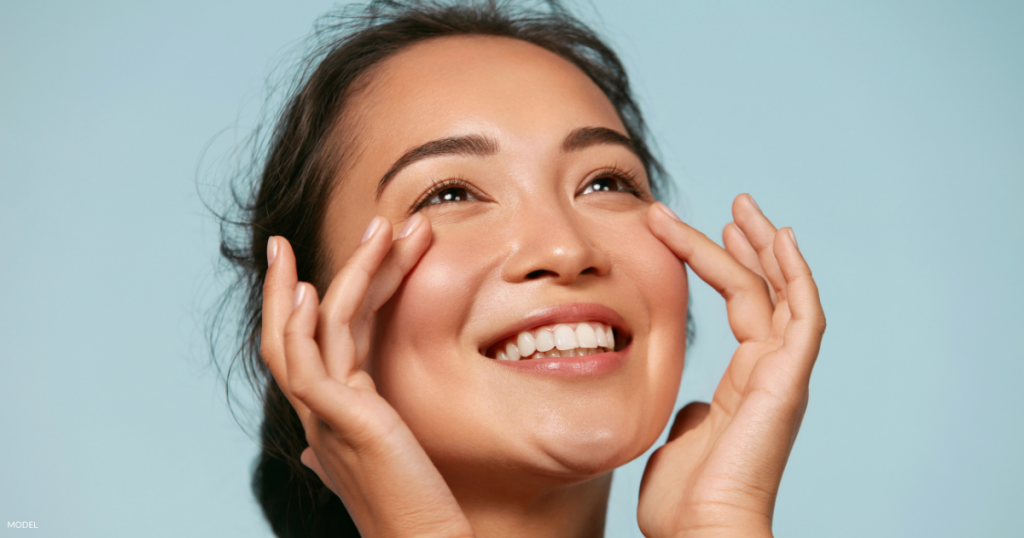When it comes to choosing between Dysport and BOTOX, most of my Tifton, GA, patients choose Dysport over BOTOX once they have been educated on their differences. Dysport, BOTOX, XEOMIN®, and Jeuveau® are the four neuromodulators approved for use in the United States, with many more on the horizon.
For my patients who have had both Dysport and BOTOX, they almost always prefer Dysport. The core protein that inhibits muscle contraction is referred to as the 150 kDa subunit. Daltons (Da) are a measure of molecular weight and a “K” Dalton means kilo or a thousand Daltons. Most researchers think that this core unit is exactly the same in all the botulinum type A products that we use. There is also a type B, but that’s not commonly used.
How do neuromodulators differ?
So if all these products have the same core unit, why do they work differently? The core subunit is surrounded by complexing proteins that can affect some of the product’s properties. For example, XEOMIN has fewer surrounding proteins. It claims a cleaner profile and possibly is less likely to cause the formation of antibodies after repeated injections. Now there is data that supports the existence of antibodies to BOTOX which can lead to a need for higher doses or can cause a shorter duration of muscle relaxation. This is an infrequent issue but is clinically relevant for some patients. The data suggests that this antibody formation occurs in a small percentage of patients.
But the biggest difference with Dysport versus BOTOX is that Dysport has a higher concentration of the core subunits. Essentially you get more active units with Dysport.
What are 3 key reasons for choosing Dysport over BOTOX?
It’s important to understand the differences between Dysport and BOTOX that I have explained. Again, it comes down to a higher concentration of the active product in Dysport. This leads to 3 key differences:
- Faster onset of action. With a higher concentration of the active product it just works faster. Dysport works in about 2 days, BOTOX takes 5 days. I don’t think this is a huge differentiator but its kind of fun to get quick results.
- More natural appearance. Perhaps because of the higher number of subunits Dysport spreads farther. This can be a two edged sword because it can get to areas that weren’t intended to be affected. But in expert hands we can use this to our advantage because as the Dysport diffuses its effect drops off more gradually. So with Dysport it’s a little harder to tell exactly where the relaxation has stopped. With BOTOX it’s a more sudden drop off and thus easier to notice.
- Longer duration of action. With more active subunits Dysport just lasts longer. Your mileage may vary but in general I find that Dysport last about 4 months in 80% of patients. With BOTOX its about 3 months. About 10% in each product category get about a month less than the majority and about 10% get a month more. I think this is the most important difference because the key to great outcomes with these products is consistency. If you allow the wrinkles to become visible the skin is getting back a crease, and that gets harder and harder to get rid of as we age. But if you stay on track the wrinkle never has a chance to start to reform, and gets softer and softer, to a point. I find that after 3 to 4 cycles of treatment the wrinkle gets as soft as its going to get. Any further improvement will require a combination of other treatments like dermal fillers or maybe energy like lasers or radiofrequency (RF). That’s a whole other topic we’ll talk about some time.
What are the 3 most common areas to use Dysport and BOTOX?
Now that we understand the differences in the products let’s talk about the most common areas to treat.
Glabella
That’s the area between the eyes. It’s how you make a frown or “furrow your brows.” This area was the first FDA-approved indication and remains a very popular starting point.
Eyes
The muscle around the eye is like a donut with the eye itself in the middle. Its natural direction of pull is inward, so relaxing this muscle opens the eyes and makes you look rested, energetic, and refreshed. I use a special technique to also lift the eyebrow and give it a more feminine arch. More about this later in advanced techniques.
Forehead
We can relax the forehead muscle to improve those horizontal wrinkles. But then we are back to balancing different objectives to get the best result. The forehead muscle is what lifts and supports the eyebrows. As I explain in a related blog post, relaxing this muscle too much can drop the eyebrows. So it has to be done just right. As we age we get a natural lowering of the eyebrow. Often patients compensate by lifting up harder on the eyebrows with the forehead muscle, mostly subconsciously. So if we take away the compensation you go back to heaviness in the eyebrows that perhaps you didn’t notice before. That’s why it takes special expertise to know who is a good candidate for forehead treatment and know who needs a lower dose or maybe no treatment at all. Like so many things in the cosmetic world, this is all a trade-off.
Browse our patients’ before and after photos to see the types of results we can create with BOTOX and Dysport.
If you’re ready to rid yourself of frown lines, forehead wrinkles, or a heavy brow area, we’re happy to talk with you about your options, including BOTOX and Dysport. Use our online form to contact us or call us at (229) 238-2007 to schedule an appointment. Our Tifton med spa serves Cordele, Albany, and Valdosta, GA, men and women and those from surrounding communities.


Leave a Reply